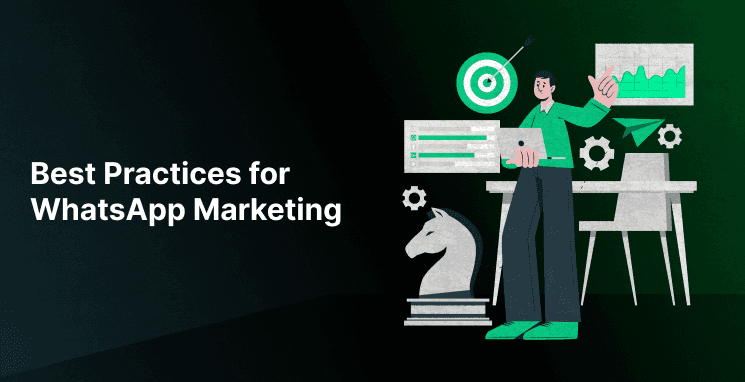1. Ensure Compliance with Regulations
When using WhatsApp for marketing, it's crucial to adhere to privacy and data protection regulations:
GDPR Compliance: If you’re targeting customers in the European Union, ensure your WhatsApp marketing practices comply with the General Data Protection Regulation (GDPR). This includes obtaining explicit consent from users before sending them marketing messages and providing clear options for opting out.
WhatsApp Policies: Familiarize yourself with WhatsApp’s business policies and guidelines. Ensure that your marketing practices align with their terms of service to avoid potential issues or penalties.
2. Crafting Effective Messages
The effectiveness of your WhatsApp marketing efforts largely depends on the quality of your messages:
Clarity and Conciseness: Keep your messages clear and to the point. Avoid jargon and complex language to ensure that your audience understands your message quickly.
Personalization: Personalize your messages based on customer data and preferences. Address recipients by their name and tailor the content to their interests to make your communication more relevant and engaging.
Call-to-Action (CTA): Include a strong call-to-action in your messages. Whether you want recipients to make a purchase, sign up for a webinar, or visit your website, a clear and compelling CTA can drive action.
3. Maintaining a Conversational Tone
WhatsApp is a platform known for its conversational nature. To build strong relationships with your audience:
Be Human: Use a friendly and approachable tone in your messages. Avoid overly formal language and engage with your audience as you would in a personal conversation.
Respond Promptly: Aim to respond to messages in a timely manner. Quick responses can enhance customer satisfaction and demonstrate that you value their interaction.
Use Emojis and Media: Incorporate emojis, images, and videos to make your messages more engaging and visually appealing. However, use them appropriately and in moderation to avoid overwhelming your audience.
4. Segmenting Your Audience
Segmenting your audience allows you to deliver more targeted and relevant messages:
Demographic Segmentation: Group your contacts based on demographic factors such as age, gender, location, or occupation. This helps tailor your messages to specific groups.
Behavioral Segmentation: Segment your audience based on their behavior, such as past interactions, purchase history, or engagement with previous campaigns. This allows you to send personalized messages that resonate with their interests.
Engagement Level: Differentiate between active and inactive contacts. Focus on re-engaging inactive users with special offers or content, while nurturing relationships with your most engaged contacts.
5. Handling Customer Inquiries and Complaints
Effective handling of customer inquiries and complaints can enhance your brand’s reputation:
Professionalism: Maintain professionalism when addressing customer inquiries and complaints. Provide clear, helpful, and courteous responses to resolve issues effectively.
Follow-Up: Follow up with customers after resolving their issues to ensure they are satisfied with the outcome. This demonstrates your commitment to excellent customer service.
Feedback Collection: Encourage customers to provide feedback on their experience with your WhatsApp support. Use this feedback to improve your service and address any recurring issues.
6. Monitoring and Analyzing Performance
Regularly monitoring and analyzing your WhatsApp marketing performance helps you refine your strategies:
Track Key Metrics: Monitor metrics such as message open rates, response rates, click-through rates, and conversion rates. Analyzing these metrics provides insights into the effectiveness of your campaigns.
Adjust Strategies: Use the data collected to adjust your marketing strategies. Test different approaches, refine your messaging, and optimize your campaigns based on performance insights.
Benchmarking: Compare your performance against industry benchmarks to gauge how your WhatsApp marketing efforts stack up against competitors and identify areas for improvement.
7. Staying Updated with WhatsApp Trends
Keeping up with the latest trends and updates in WhatsApp marketing ensures that you stay ahead of the curve:
Feature Updates: Stay informed about new features and updates released by WhatsApp. Leveraging these features can enhance your marketing efforts and provide new opportunities for engagement.
Industry Trends: Monitor trends in the broader digital marketing landscape. Understanding emerging trends and technologies can help you adapt your strategies and stay competitive.
Continuous Learning: Invest in continuous learning and professional development. Attend webinars, read industry blogs, and participate in forums to stay current with best practices and innovations in WhatsApp marketing.

July 24, 2024
5 min read

